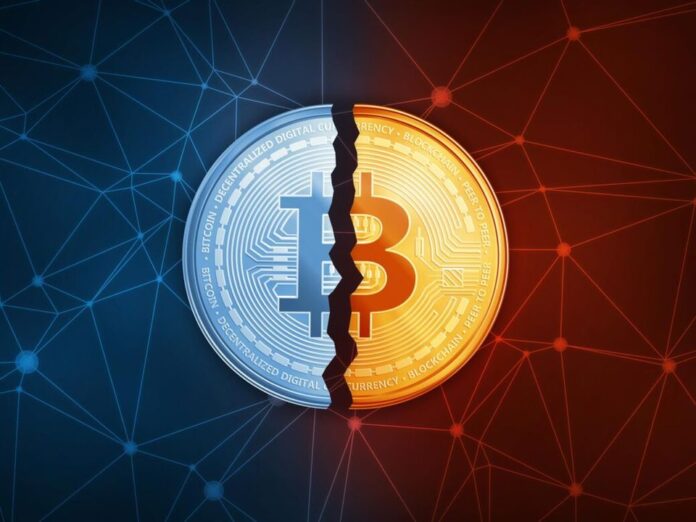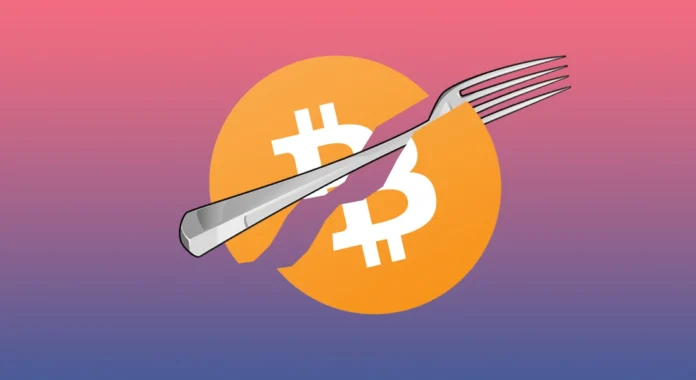Since technological advancements are so fast-paced in this day and age, practically every software and systems need to conduct constant upgrade and maintenance. By doing so, they can improve their efficiency. Therefore, this is not something that you should miss on out whenever there’s a chance to do it.
Naturally, you shouldn’t be surprised by the fact that all the companies are investing in this field a lot of money on an annual level. At the same time, we can say the same thing about blockchain platforms. They are updated frequently to improve the systems and achieve much-needed efficiency.
One of the ways this can be achieved is through forks. There are two different sorts of them you can take a look at, we are talking about soft and hard forks. Today, we want to shine a light on both of these concepts and provide you with some necessary details to understand them. Without further ado, let’s begin.
Hard Fork

Before you can have a proper understanding of the hard fork approaches, it is essential to have a basic understanding of the blockchain as a technology. We are talking about the chain made of different blocks of data, which works as a digital ledger. When you understand that, comprehending the concept of a hard fork becomes significantly easier.
The easiest way to describe it is to say that the hard fork is the latest version of the blockchain, which leads to its separation. Some of the nodes that make the chain will not need any consensus any longer. Therefore, you will have two different sorts of networks that are working on their own, independently.
One of the main vulnerabilities of this approach is the possibility to repent all the attacks that might come. When you know that two different networks are working on their own, it is easy to understand why this is the case. If you want to learn more about these, visit fintechzoom.com.
Soft Fork

A soft fork is somewhat different from a hard fork. We are talking about an approach that makes it possible to make some modifications towards making it compatible with all other aspects. The old blockchain will continue to work on its own, but it will also be able to accept the new platforms due to the use of a soft fork.
The soft fork serves as a method to bridge the gap between the old blockchain network to another one, by implementing various rules. At the same time, the soft approach manages to have both a new and old network work properly, without any problems in the procedure.
The main benefit of utilizing this approach is removing the signature information from the transitional data records. At the same time, the space is cleared to make space for increased transactional productivity for blocks made in the future. Thankfully, it is possible to use old nodes to validate new blocks.
How is the Fork Formation Determined?
As you know, there is no decentralized entity that has authority over the blockchain. So, it is obvious that no authority can determine the fork formation. Instead, this decision is made by all the members who are taking part in the platform. They can make modifications to make the system perform much better in the future.
We are talking about miners and traders. The reason is quite simple if you take a closer look at it. The miners have the biggest influence on the whole process since they are offering the biggest amount of resources into the creation of blocks. So, nobody should be surprised that they can make the best possible decision.
As everyone knows, we are talking about an open-source approach. Therefore, it is possible for some of the actions to overlap. But to prevent these issues from happening, they can come up with certain decisions. Naturally, this is often a lengthy process since all the individual aspects need to be addressed accordingly.
What are the Main Differences?
Now, we want to take a look at some of the important differences between these two concepts.

Block Size
One of the main reasons why forks are used in digital currencies like Bitcoin is to make the appropriate size of blocks that are used in the blockchain system. Those who are well-versed in these matters know that blocks hold the transaction data. So, the more data there is in a block, the more transactions are faster.
When you take a look at the history of bitcoin, the block size was the initial reason why these forks were introduced. With softer ones, it is possible to address blocks of small size, and with the hard ones, you can address those that have a bigger capacity. Therefore, it all depends on your actual needs in the procedure at hand.
Backward Compatibility
The next difference we would like to address is known as backward compatibility. We are talking about the ability of the software system to use interfaces that were present in the older versions of the system.
With hard forks, it is not possible to have backward compatibility, while on the side of soft ones, you can do so without too many problems in the procedure. For that simple reason, hard ones divide the network into separate parts.
Basically, one functions the same as was the case before the utilization of the concept, and another one functions with the new characteristics. On the other side, the system functions we can see that the old system functions will all the new implementations.
Once again, the actual needs of the system at hand will determine which one of these approaches will be utilized. Of course, this decision needs to be made patiently and after understanding the needs.
In Conclusion
When you understand the differences and all the important elements of these two, making the right decision becomes significantly easier. Here, we’ve discussed both of them in greater detail. We do have no doubt you will find this insight to be of the utmost help in the future.








